-
 Bitcoin
Bitcoin $106,754.6083
1.33% -
 Ethereum
Ethereum $2,625.8249
3.80% -
 Tether USDt
Tether USDt $1.0001
-0.03% -
 XRP
XRP $2.1891
1.67% -
 BNB
BNB $654.5220
0.66% -
 Solana
Solana $156.9428
7.28% -
 USDC
USDC $0.9998
0.00% -
 Dogecoin
Dogecoin $0.1780
1.14% -
 TRON
TRON $0.2706
-0.16% -
 Cardano
Cardano $0.6470
2.77% -
 Hyperliquid
Hyperliquid $44.6467
10.24% -
 Sui
Sui $3.1128
3.86% -
 Bitcoin Cash
Bitcoin Cash $455.7646
3.00% -
 Chainlink
Chainlink $13.6858
4.08% -
 UNUS SED LEO
UNUS SED LEO $9.2682
0.21% -
 Avalanche
Avalanche $19.7433
3.79% -
 Stellar
Stellar $0.2616
1.64% -
 Toncoin
Toncoin $3.0222
2.19% -
 Shiba Inu
Shiba Inu $0.0...01220
1.49% -
 Hedera
Hedera $0.1580
2.75% -
 Litecoin
Litecoin $87.4964
2.29% -
 Polkadot
Polkadot $3.8958
3.05% -
 Ethena USDe
Ethena USDe $1.0000
-0.04% -
 Monero
Monero $317.2263
0.26% -
 Bitget Token
Bitget Token $4.5985
1.68% -
 Dai
Dai $0.9999
0.00% -
 Pepe
Pepe $0.0...01140
2.44% -
 Uniswap
Uniswap $7.6065
5.29% -
 Pi
Pi $0.6042
-2.00% -
 Aave
Aave $289.6343
6.02%
Is it credible that the SAR stop loss point turns from red to green but the trading volume is sluggish?
A green SAR dot suggests a potential uptrend, but without rising volume, the reversal may lack strength and could signal a false start in volatile crypto markets.
Jun 17, 2025 at 07:56 am

Understanding the SAR Indicator and Its Role in Cryptocurrency Trading
The Parabolic SAR (Stop and Reverse) is a popular technical indicator used by cryptocurrency traders to determine potential reversals in price movement. When the SAR dots switch from red to green, it typically signals that an uptrend may be beginning, prompting traders to consider entering long positions. However, this signal alone does not guarantee reliability without considering other market indicators such as volume.
In cryptocurrency trading, where volatility can drastically affect short-term trends, relying solely on the SAR reversal point can lead to misleading interpretations. Traders often look for confirmation through volume data, which reflects the strength behind a price move. A green SAR dot with low or sluggish volume raises concerns about the credibility of the trend reversal.
What Does a Green SAR Dot Signify?
When the SAR dot changes from red to green, it indicates that the price has potentially reversed from a downtrend to an uptrend. This shift suggests that buyers are gaining control over sellers. In theory, this should coincide with increased buying pressure reflected in rising trading volume. However, when the SAR turns green but volume remains stagnant, it contradicts what one would expect during a genuine bullish reversal.
This discrepancy could suggest that the price movement lacks conviction from major market participants. The green SAR dot may be premature, based purely on price action without support from strong volume dynamics. As a result, traders should treat this signal with caution, especially in markets like cryptocurrency where manipulation and fakeouts are common.
Why Is Volume Important in Confirming SAR Signals?
Volume plays a critical role in validating any technical signal, including those generated by the SAR indicator. Here’s how volume contributes to the overall analysis:
- High volume confirms direction: A surge in volume accompanying a SAR reversal increases the likelihood that the trend change is legitimate.
- Low volume warns of weakness: If the SAR dot turns green but volume remains flat, it implies that the rally isn’t supported by strong buyer interest.
- Cryptocurrency volatility demands extra scrutiny: Given the fast-moving nature of crypto markets, false signals are more frequent. Using volume as a filter helps avoid entering trades based on weak momentum.
Traders should always cross-reference SAR signals with volume charts, especially when analyzing assets like Bitcoin, Ethereum, or altcoins, where sudden spikes and dips can occur due to whale activity or news events.
How to Analyze SAR and Volume Together in Crypto Charts
To properly analyze the relationship between the SAR indicator and volume, follow these steps:
- Identify the SAR reversal point: Locate where the SAR dot switches from red to green on your chart.
- Check the corresponding volume bar: At the moment of the reversal, examine whether there's a noticeable increase in volume.
- Compare with previous volume levels: Determine if the current volume is significantly higher than the average volume seen during the prior downtrend.
- Use additional indicators for confirmation: Consider using tools like MACD or RSI to assess momentum and confirm whether the reversal has underlying strength.
- Observe candlestick patterns around the reversal: Strong bullish candles like hammers or engulfing patterns provide better confirmation than small-bodied candles.
By combining these techniques, you can reduce the risk of acting on a false SAR signal in the volatile world of cryptocurrency trading.
Potential Reasons Behind a Green SAR with Low Volume
There are several possible explanations for why the SAR might turn green while volume stays low:
- Market indecision: The price may have moved slightly upward due to minor buying, but large players aren’t participating actively.
- Short squeeze scenario: In some cases, a brief bounce caused by a short squeeze can push the SAR to flip colors without significant volume backing it.
- Algorithmic noise or fakeouts: Automated trading systems or manipulative actors might cause temporary price movements that trigger technical indicators without real demand.
- Time of day factor: During off-peak hours, especially in global 24/7 crypto markets, volume naturally drops, making SAR flips less reliable.
Understanding these nuances is crucial when interpreting SAR signals in the context of cryptocurrency trading, where traditional market rules don't always apply.
Practical Steps to Verify SAR Reversal Credibility
If you encounter a SAR turning green with sluggish volume, here’s what you can do to verify its credibility:
- Wait for a follow-through candle: Observe whether the next few candles after the reversal show continued strength and increasing volume.
- Look at multiple timeframes: Check the same signal on different timeframes (e.g., 1-hour, 4-hour, daily) to see if the SAR reversal aligns across them.
- Monitor order book depth: In spot or futures markets, check the liquidity present near the current price level. Thin order books may indicate weak support for the reversal.
- Use volume-weighted moving averages: Overlay volume-weighted moving averages to identify whether the price is above key support levels with sufficient volume.
These practical checks help traders make more informed decisions rather than reacting impulsively to isolated SAR signals.
Frequently Asked Questions
Q: Can I rely solely on the SAR indicator in crypto trading?
A: No, the SAR should be used in conjunction with other tools like volume, candlestick patterns, and momentum indicators to enhance accuracy.
Q: What does it mean when the SAR turns green but the price doesn’t rise significantly?
A: It may indicate a lack of strong buying pressure. The reversal might be premature or part of a consolidation phase.
Q: How can I differentiate between a real SAR reversal and a fakeout in crypto?
A: Look for confirmation through volume surges, breakout of key resistance levels, and alignment with broader market sentiment or news.
Q: Should I exit my position if the SAR turns green but volume remains low?
A: Not necessarily. Monitor subsequent price action and volume behavior before making a decision. Use trailing stop-loss strategies if needed.
Disclaimer:info@kdj.com
The information provided is not trading advice. kdj.com does not assume any responsibility for any investments made based on the information provided in this article. Cryptocurrencies are highly volatile and it is highly recommended that you invest with caution after thorough research!
If you believe that the content used on this website infringes your copyright, please contact us immediately (info@kdj.com) and we will delete it promptly.
- 2025-W Uncirculated American Gold Eagle and Dr. Vera Rubin Quarter Mark New Products
- 2025-06-13 06:25:13
- Ruvi AI (RVU) Leverages Blockchain and Artificial Intelligence to Disrupt Marketing, Entertainment, and Finance
- 2025-06-13 07:05:12
- H100 Group AB Raises 101 Million SEK (Approximately $10.6 Million) to Bolster Bitcoin Reserves
- 2025-06-13 06:25:13
- Galaxy Digital CEO Mike Novogratz Says Bitcoin Will Replace Gold and Go to $1,000,000
- 2025-06-13 06:45:13
- Trust Wallet Token (TWT) Price Drops 5.7% as RWA Integration Plans Ignite Excitement
- 2025-06-13 06:45:13
- Ethereum (ETH) Is in the Second Phase of a Three-Stage Market Cycle
- 2025-06-13 07:25:13
Related knowledge
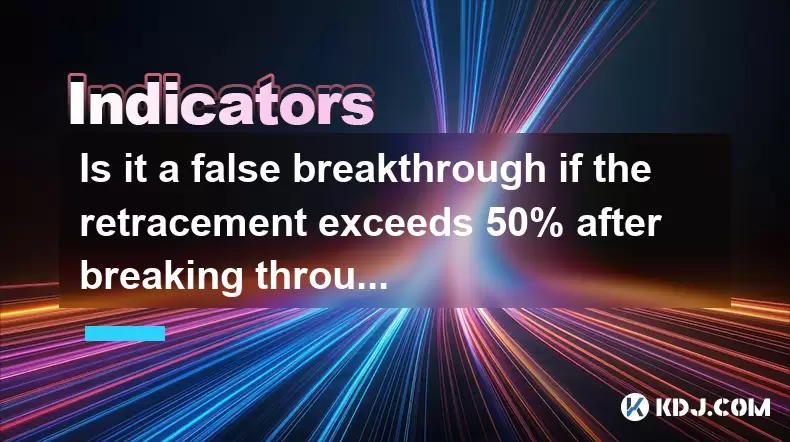
Is it a false breakthrough if the retracement exceeds 50% after breaking through the platform?
Jun 17,2025 at 08:01pm
Understanding Breakouts and Retracements in Cryptocurrency TradingIn cryptocurrency trading, breakouts refer to when the price of an asset moves beyond a defined support or resistance level with increased volume. These events often attract traders looking to capitalize on momentum. However, not all breakouts are valid. A false breakout, also known as a ...
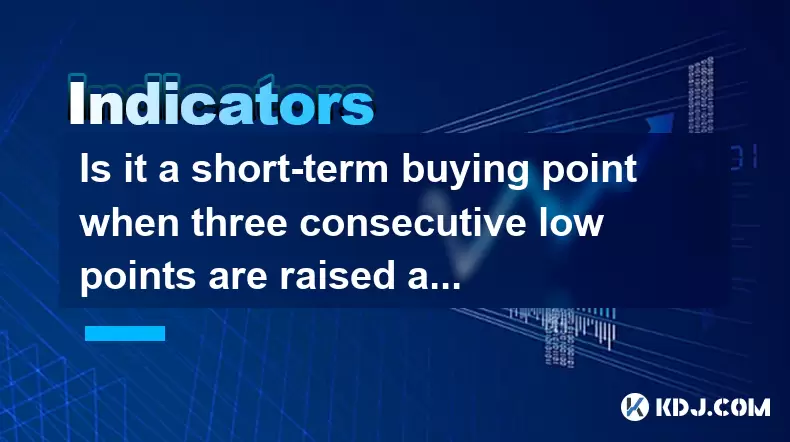
Is it a short-term buying point when three consecutive low points are raised at the 30-minute level?
Jun 17,2025 at 08:14pm
Understanding the Three Consecutive Low Points PatternIn technical analysis, identifying patterns in price movements is essential for making informed trading decisions. One such pattern that traders often observe is when three consecutive low points are raised within a specific timeframe — in this case, the 30-minute chart. This pattern suggests a poten...
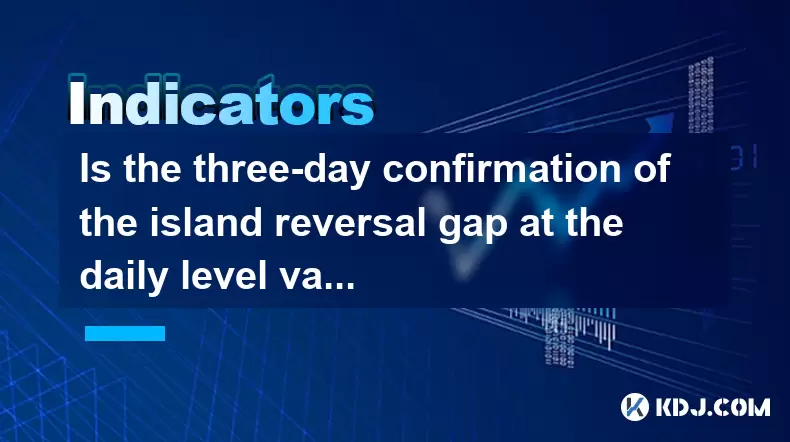
Is the three-day confirmation of the island reversal gap at the daily level valid?
Jun 17,2025 at 09:49pm
Understanding the Island Reversal Gap in Cryptocurrency TradingIn cryptocurrency trading, technical analysis plays a pivotal role in identifying potential market reversals. One such pattern is the island reversal gap, which signals a possible trend change. This pattern consists of a gap followed by a period of consolidation or sideways movement and then...
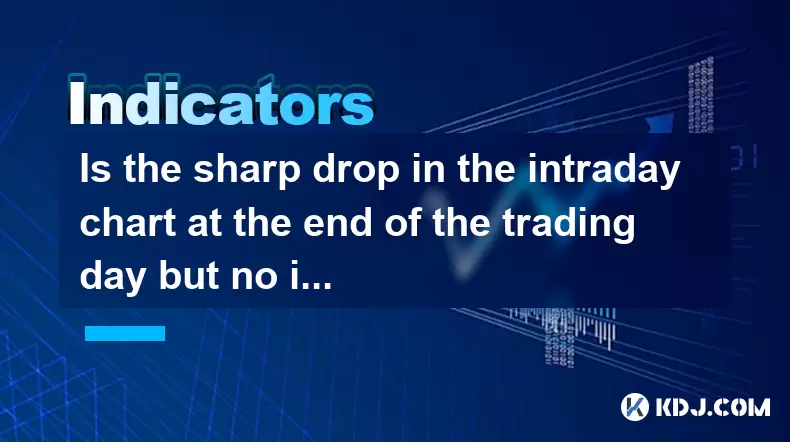
Is the sharp drop in the intraday chart at the end of the trading day but no increase in volume a trap to sell?
Jun 17,2025 at 08:35pm
Understanding the Intraday Chart DynamicsIn cryptocurrency trading, intraday charts are widely used by traders to analyze short-term price movements. These charts display price fluctuations within a single trading day and help traders make informed decisions based on real-time data. One common phenomenon observed is a sharp drop in price near the end of...
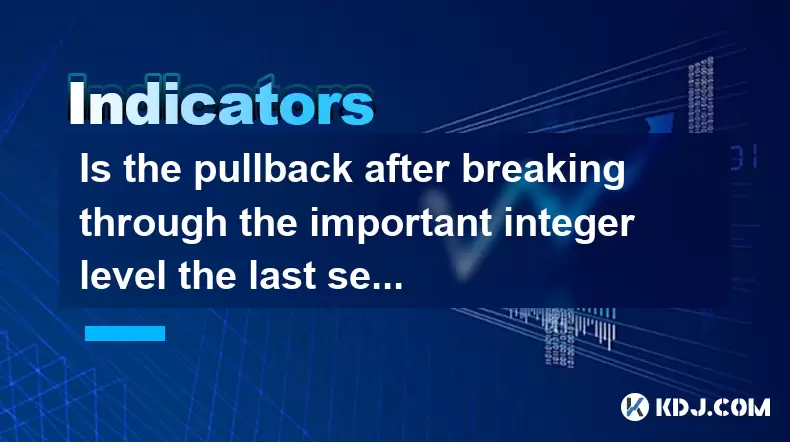
Is the pullback after breaking through the important integer level the last selling point?
Jun 17,2025 at 08:57pm
Understanding Important Integer Levels in Cryptocurrency TradingIn the world of cryptocurrency trading, certain price levels hold significant psychological and technical importance. These are commonly referred to as important integer levels—such as $10,000 for Bitcoin or $1,000 for Ethereum. These levels often act as strong support or resistance zones d...
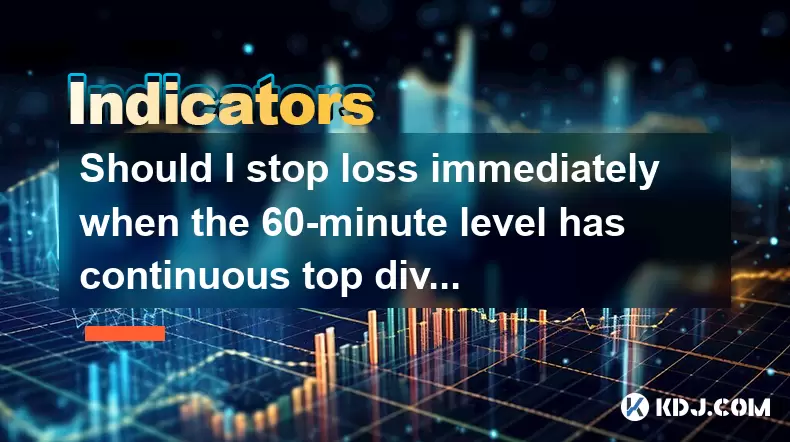
Should I stop loss immediately when the 60-minute level has continuous top divergence?
Jun 17,2025 at 05:28pm
Understanding Top Divergence in the 60-Minute ChartIn cryptocurrency trading, top divergence refers to a technical signal where the price of an asset makes higher highs while the indicator (often RSI or MACD) makes lower lows. This is commonly interpreted as a sign of weakening momentum and potential reversal. When this occurs on the 60-minute chart, it...

Is it a false breakthrough if the retracement exceeds 50% after breaking through the platform?
Jun 17,2025 at 08:01pm
Understanding Breakouts and Retracements in Cryptocurrency TradingIn cryptocurrency trading, breakouts refer to when the price of an asset moves beyond a defined support or resistance level with increased volume. These events often attract traders looking to capitalize on momentum. However, not all breakouts are valid. A false breakout, also known as a ...

Is it a short-term buying point when three consecutive low points are raised at the 30-minute level?
Jun 17,2025 at 08:14pm
Understanding the Three Consecutive Low Points PatternIn technical analysis, identifying patterns in price movements is essential for making informed trading decisions. One such pattern that traders often observe is when three consecutive low points are raised within a specific timeframe — in this case, the 30-minute chart. This pattern suggests a poten...

Is the three-day confirmation of the island reversal gap at the daily level valid?
Jun 17,2025 at 09:49pm
Understanding the Island Reversal Gap in Cryptocurrency TradingIn cryptocurrency trading, technical analysis plays a pivotal role in identifying potential market reversals. One such pattern is the island reversal gap, which signals a possible trend change. This pattern consists of a gap followed by a period of consolidation or sideways movement and then...

Is the sharp drop in the intraday chart at the end of the trading day but no increase in volume a trap to sell?
Jun 17,2025 at 08:35pm
Understanding the Intraday Chart DynamicsIn cryptocurrency trading, intraday charts are widely used by traders to analyze short-term price movements. These charts display price fluctuations within a single trading day and help traders make informed decisions based on real-time data. One common phenomenon observed is a sharp drop in price near the end of...

Is the pullback after breaking through the important integer level the last selling point?
Jun 17,2025 at 08:57pm
Understanding Important Integer Levels in Cryptocurrency TradingIn the world of cryptocurrency trading, certain price levels hold significant psychological and technical importance. These are commonly referred to as important integer levels—such as $10,000 for Bitcoin or $1,000 for Ethereum. These levels often act as strong support or resistance zones d...

Should I stop loss immediately when the 60-minute level has continuous top divergence?
Jun 17,2025 at 05:28pm
Understanding Top Divergence in the 60-Minute ChartIn cryptocurrency trading, top divergence refers to a technical signal where the price of an asset makes higher highs while the indicator (often RSI or MACD) makes lower lows. This is commonly interpreted as a sign of weakening momentum and potential reversal. When this occurs on the 60-minute chart, it...
See all articles

























































































